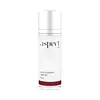What's inside
What's inside
 Key Ingredients
Key Ingredients

 Benefits
Benefits

 Concerns
Concerns

No concerns
 Ingredients Side-by-side
Ingredients Side-by-side

Water
Skin ConditioningAloe Barbadensis Leaf Juice
Skin ConditioningGlycerin
HumectantAcacia Seyal Gum
HumectantXanthan Gum
EmulsifyingPhenoxyethanol
PreservativePanthenol
Skin ConditioningTocopheryl Acetate
AntioxidantSodium Hyaluronate
HumectantHydrolyzed Hyaluronic Acid
HumectantEpilobium Angustifolium Flower/Leaf/Stem Extract
Skin ConditioningNiacinamide
SmoothingEthylhexylglycerin
Skin ConditioningBackhousia Citriodora Leaf Extract
AstringentCodonopsis Lanceolata Extract
AntioxidantCitrus Glauca Fruit Extract
HumectantDavidsonia Jerseyana Fruit Extract
AntioxidantAscorbyl Tetraisopalmitate
AntioxidantPotassium Sorbate
PreservativeSodium Metabisulfite
AntioxidantWater, Aloe Barbadensis Leaf Juice, Glycerin, Acacia Seyal Gum, Xanthan Gum, Phenoxyethanol, Panthenol, Tocopheryl Acetate, Sodium Hyaluronate, Hydrolyzed Hyaluronic Acid, Epilobium Angustifolium Flower/Leaf/Stem Extract, Niacinamide, Ethylhexylglycerin, Backhousia Citriodora Leaf Extract, Codonopsis Lanceolata Extract, Citrus Glauca Fruit Extract, Davidsonia Jerseyana Fruit Extract, Ascorbyl Tetraisopalmitate, Potassium Sorbate, Sodium Metabisulfite
Water
Skin ConditioningGlycerin
HumectantButylene Glycol
HumectantPanthenol
Skin ConditioningPentylene Glycol
Skin ConditioningPhenoxyethanol
PreservativeChlorphenesin
AntimicrobialAcrylates/C10-30 Alkyl Acrylate Crosspolymer
Emulsion StabilisingTrehalose
HumectantXylitylglucoside
HumectantSodium Hyaluronate
HumectantAnhydroxylitol
HumectantDisodium EDTA
Sodium Hydroxide
BufferingYeast Extract
Skin ConditioningXylitol
HumectantHydrolyzed Hyaluronic Acid
HumectantCarrageenan
Agar
MaskingPotassium Chloride
Xanthan Gum
EmulsifyingUltramarines
Titanium Dioxide
Cosmetic ColorantWater, Glycerin, Butylene Glycol, Panthenol, Pentylene Glycol, Phenoxyethanol, Chlorphenesin, Acrylates/C10-30 Alkyl Acrylate Crosspolymer, Trehalose, Xylitylglucoside, Sodium Hyaluronate, Anhydroxylitol, Disodium EDTA, Sodium Hydroxide, Yeast Extract, Xylitol, Hydrolyzed Hyaluronic Acid, Carrageenan, Agar, Potassium Chloride, Xanthan Gum, Ultramarines, Titanium Dioxide
 Reviews
Reviews

Ingredients Explained
These ingredients are found in both products.
Ingredients higher up in an ingredient list are typically present in a larger amount.
Glycerin is already naturally found in your skin. It helps moisturize and protect your skin.
A study from 2016 found glycerin to be more effective as a humectant than AHAs and hyaluronic acid.
As a humectant, it helps the skin stay hydrated by pulling moisture to your skin. The low molecular weight of glycerin allows it to pull moisture into the deeper layers of your skin.
Hydrated skin improves your skin barrier; Your skin barrier helps protect against irritants and bacteria.
Glycerin has also been found to have antimicrobial and antiviral properties. Due to these properties, glycerin is often used in wound and burn treatments.
In cosmetics, glycerin is usually derived from plants such as soybean or palm. However, it can also be sourced from animals, such as tallow or animal fat.
This ingredient is organic, colorless, odorless, and non-toxic.
Glycerin is the name for this ingredient in American English. British English uses Glycerol/Glycerine.
Learn more about GlycerinHydrolyzed Hyaluronic Acid is a form of hyaluronic acid. It is created by the hydrolysis of hyaluronic acid with a high molecular weight. Once created, Hydrolyzed Hyaluronic Acid has a low molecular weight.
Low molecular weight HA has been shown to hydrate and increase elasticity of the skin. Increasing elasticity is also associated with reduction of wrinkle depth.
One study found topical low molecular weight hyaluronic acid may be considered for the treatment of rosacea in the adult population. However, we always recommend speaking with a professional about your skin concerns.
Hyaluronic acids are a humectant. This means they draw moisture from the air. Hyaluronic acids help moisturize, soothe, and protect the skin.
Read more about other common forms of hyaluronic acid:
Learn more about Hydrolyzed Hyaluronic AcidPanthenol is a common ingredient that helps hydrate and soothe the skin. It is found naturally in our skin and hair.
There are two forms of panthenol: D and L.
D-panthenol is also known as dexpanthenol. Most cosmetics use dexpanthenol or a mixture of D and L-panthenol.
Panthenol is famous due to its ability to go deeper into the skin's layers. Using this ingredient has numerous pros (and no cons):
Like hyaluronic acid, panthenol is a humectant. Humectants are able to bind and hold large amounts of water to keep skin hydrated.
This ingredient works well for wound healing. It works by increasing tissue in the wound and helps close open wounds.
Once oxidized, panthenol converts to pantothenic acid. Panthothenic acid is found in all living cells.
This ingredient is also referred to as pro-vitamin B5.
Learn more about PanthenolPhenoxyethanol is a preservative that has germicide, antimicrobial, and aromatic properties. Studies show that phenoxyethanol can prevent microbial growth. By itself, it has a scent that is similar to that of a rose.
It's often used in formulations along with Caprylyl Glycol to preserve the shelf life of products.
Sodium Hyaluronate is hyaluronic acid's salt form. It is commonly derived from the sodium salt of hyaluronic acid.
Like hyaluronic acid, it is great at holding water and acts as a humectant. This makes it a great skin hydrating ingredient.
Sodium Hyaluronate is naturally occurring in our bodies and is mostly found in eye fluid and joints.
These are some other common types of Hyaluronic Acid:
Learn more about Sodium HyaluronateWater. It's the most common cosmetic ingredient of all. You'll usually see it at the top of ingredient lists, meaning that it makes up the largest part of the product.
So why is it so popular? Water most often acts as a solvent - this means that it helps dissolve other ingredients into the formulation.
You'll also recognize water as that liquid we all need to stay alive. If you see this, drink a glass of water. Stay hydrated!
Learn more about WaterXanthan gum is used as a stabilizer and thickener within cosmetic products. It helps give products a sticky, thick feeling - preventing them from being too runny.
On the technical side of things, xanthan gum is a polysaccharide - a combination consisting of multiple sugar molecules bonded together.
Xanthan gum is a pretty common and great ingredient. It is a natural, non-toxic, non-irritating ingredient that is also commonly used in food products.
Learn more about Xanthan Gum